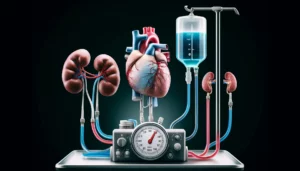
Hybrid Feature Selection in a Machine Learning Predictive Model for Perioperative Myocardial Injury in Noncoronary Cardiac Surgery with Cardiopulmonary Bypass
This study developed a predictive model for perioperative myocardial injury (PMI) using hybrid feature selection (FS) methods in patients undergoing noncoronary cardiac surgery with cardiopulmonary bypass (CPB). Conducted at Fuwai Hospital, China, the retrospective study included 1130 patients, with an overall PMI incidence of 20.3%. Various machine learning models were evaluated, with the Naïve Bayes model achieving the highest AUC. The study highlighted the importance of factors like prolonged CPB, aortic clamp time, and preoperative low platelet count in predicting PMI risk.










